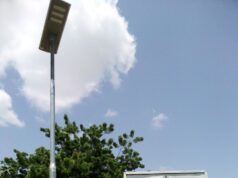By Geoffrey Okamoto
Challenging times for emerging markets
THUR, APRIL 23 2020-theG&BJournal- The COVID-19 pandemic has severely disrupted the global economy at every level. Across the world, financial conditions have tightened dramatically, with unprecedented portfolio outflows from emerging markets in terms of both size (a record of about $100 billion) and speed, and markets effectively frozen in some cases. This has created sizable demand for U.S. dollar liquidity, with emerging markets facing sharp liquidity shortages.
Several institutions have responded to this challenge: major central banks extended bilateral swap lines to each other and to more countries than during the global financial crisis, and the New York Federal Reserve’s repo program provides dollar liquidity to several more countries. However, the Fed and other central banks cannot provide swaps for all countries, and many emerging market members of the IMF are still experiencing liquidity shortages or will face the risk of occasional “sudden stops” for some time to come, and well after the swap lines are terminated. This exposes a critical gap in the global financial safety net, but one we moved quickly to fill.
A new IMF liquidity backstop
We cannot predict when such liquidity shortages will happen. But we do know that when the global capital pipelines freeze up, a short-term liquidity problem can quickly slide into a deeper and longer-lasting solvency problem. A liquidity line that is available on demand can be a lifeline in such cases.
The IMF responded to this need by establishing a new facility last week called the Short-term Liquidity Line (SLL), the first addition to the IMF’s financing toolkit in almost ten years. As part of its broader crisis-response strategy, this new facility provides a reliable and renewable credit line, without ex post conditionality, to members with very strong fundamentals and policy frameworks—the same qualification criteria as another IMF facility called the Flexible Credit Line. The SLL is designed to address a special balance-of-payments need—potential, moderate, and short-term—reflected in capital account pressures following external shocks.
|READ ALSO: A global crisis like no other needs a global response like no other
https://govandbusinessjournal.ng/a-global-crisis-like-no-other-needs-a-global-response-like-no-other/
A country that signs up for an SLL will be signaling the IMF’s endorsement of their very strong policy frameworks and institutions to markets. That, in turn, can lower their borrowing costs, and provide a welcome support during volatile times. The SLL can also help reduce future financing needs by helping countries arrest moderate-sized liquidity problems before they can evolve into bigger problems. We estimate the current total demand for the SLL from several countries could be up to $50 billion, which is a far more modest portion of the IMF’s $1-trillion firepower than would be required otherwise if the same group of countries had to come for IMF-supported programs. When many countries have pressing financing needs, addressing the problem early can limit future needs and adverse spillovers to other countries.
Innovative design, low cost
The SLL has innovative features, in particular revolving access allowing repeated drawdown and repayment during its 12-month duration. This facility does not operate like a traditional loan but can be likened, in some respects, to a credit card, where money can be drawn and replenished up to a limit.
The SLL is also renewable in the sense that successor arrangements are possible for as long as the member continues to qualify, and to have the special balance-of-payment need. All these features could be invaluable for members as they seek to overcome the crisis and navigate the highly uncertain recovery period ahead.
The SLL has a unique fee structure to support its revolving nature—e.g. 8 basis points to set up, that is, $800,000 for a $1-billion credit line. To put that into context, if a qualifying member has $20 billion in public debt, and is able to lower borrowing costs by just 1 basis point by getting the SLL, their savings would be $2 million, and that’s $2 million that could be better deployed in the present crisis toward critical healthcare and social safety net needs instead of debt servicing.
Enhanced international cooperation
The establishment of the SLL demonstrates the IMF’s commitment to supporting its members that do not always have access to other liquidity lines, complementing the IMF’s reforms to enhance its emergency financing toolkit, and provide debt relief for the poorest members. In many ways, the SLL is also a clear demonstration of the willingness of the IMF’s membership to put differences aside and come together during this time of crisis. While the SLL has been years in the making, the IMF’s Executive Board was able to unite around a proposal and approve the facility in a matter of days. It is this sort of decisive action that is needed to address the needs of countries, large and small, as they fight the economic fallout from the COVID-19 pandemic.

Mr. Geoffrey W.S. Okamoto was appointed First Deputy Managing Director of the International Monetary Fund on March 12, 2020 and he assumed his position on March 19, 2020.
This article originally was published by IMFBlog. IMFBlog is a forum for the views of the International Monetary Fund (IMF) staff and officials on pressing economic and policy issues of the day.
|twitter:@theGBJournal|email: info@govandbusinessjournal.com.ng|
Subscribe
Login
0 Comments
Oldest









